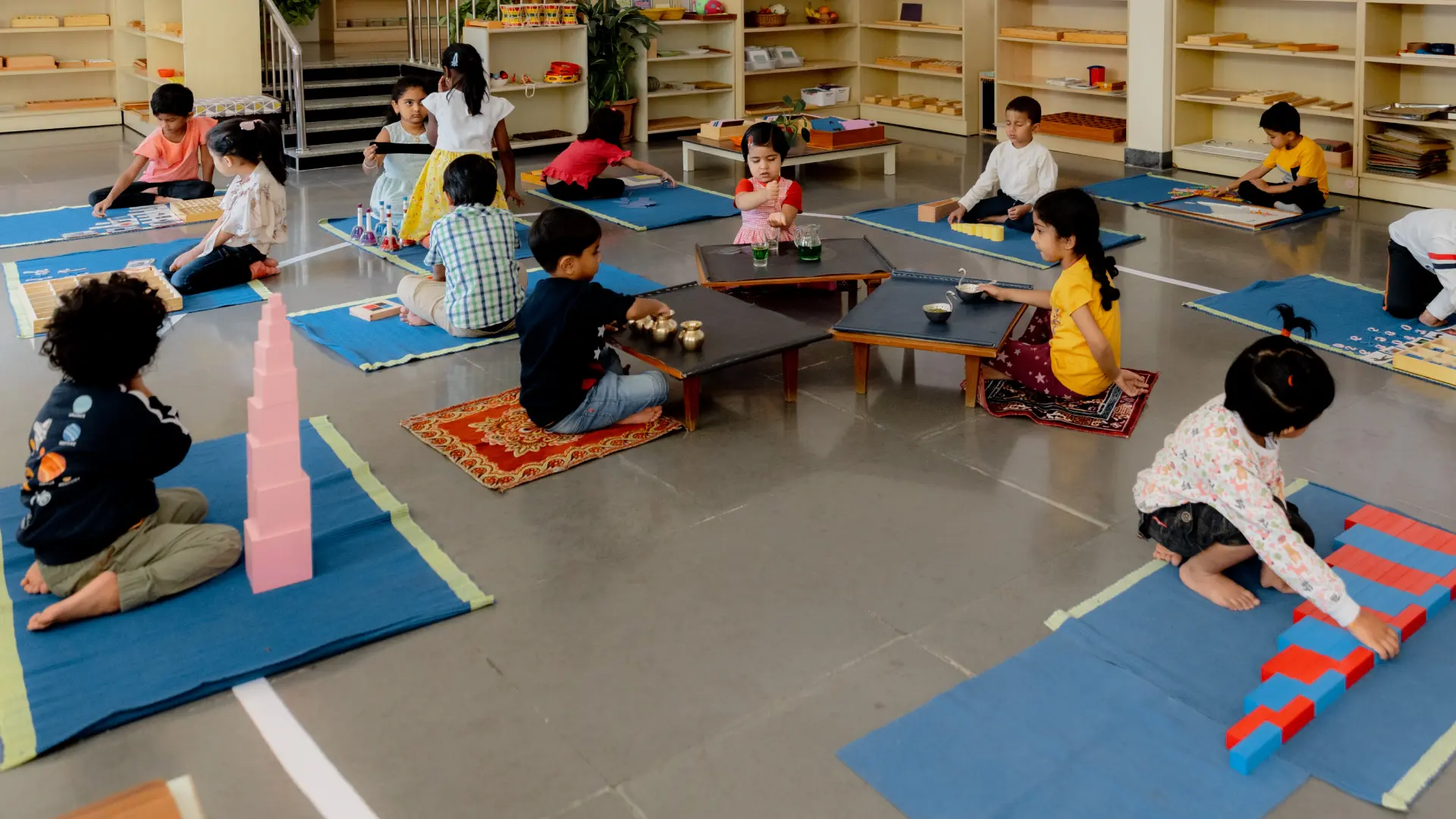How to Choose a Montessori School
Many think the word ‘Montessori’ means a nursery school. It is a wrong conception. Montessori is a method of education. It could be applied from birth to university level and even to adult education. Nowadays, in Bangalore, we find Montessori signboards in every street and corner. Therefore it is necessary to identify the Montessori schools and their characteristics.
The Montessori Method is based on three agents.
1. The specially prepared environment
2. The specially prepared means of development
3. The specially trained adult
These are three pillars of the Montessori Method. The method doesn’t work if any one of these is absent.
The Specially prepared Environment: According to Dr Maria Montessori, the Montessori school should be in a residential area, where children could go to school freely whenever they feel like it. It should have lots of plants, trees, small water streams, bridges etc. But this ideal requirement is difficult to find in metros. In that case, the school should at least have a small garden and classrooms should have enough space to display the materials, work, and move around. A classroom of 35 children should be 6’x6’x35, i.e. around 1200sq feet.
The Specially Prepared Means of Development: The means of development are the Montessori equipment. The speciality of the Montessori Method is its material. Material is scientific and precise. An authorised manufacturer should prepare the materials. A Montessori classroom of 35 children should have one complete set of materials.
The specially trained adult: the teacher is responsible for preparing the environment and the materials. Therefore it is necessary to have Montessori Training. The training prepares the teacher technically and spiritually. They will be trained to use the environment and equipment. Other teacher qualifications, such as regular university degrees in education, will not serve this purpose. The teacher has to go through rigorous Montessori Teachers’ Training at a recognized Montessori Training Institute. The training cannot be offered through correspondence or online courses. The teacher has to practice presentations both as a child and as an adult understanding the Montessori principles and theory.
According to Dr Montessori, for 35 children, one set of materials and one adult are needed. Before admitting the child to any Montessori Environment, one has to examine the environment for its space, and precise and scientific equipment and check whether the teacher is a trained ‘Montessorian’.
